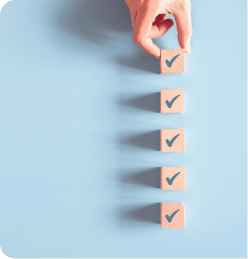It’s no secret that it can be tough for women in perimenopause to maintain a healthy body weight. Hormonal imbalance and related changes in the body can slow down metabolism. When that happens, it suddenly becomes easier to gain weight and much more difficult to lose it.

This is the main reason why conventional weight loss plans don’t really help as you get older. The problem isn’t how many calories you’re eating, so restricting calories won’t lead to weight loss.
But here’s something that can — breathing! That may seem too simple to be believed — but a new study proves it works, and explains how.
Diaphragmatic breathing helps boost metabolism
A recent study in the Journal of Physical Therapy Science shows that practicing a special technique called diaphragmatic breathing can boost metabolism in adults, helping to switch on fat burning. It has lots of other health benefits too.
In the study of 38 participants, half practiced diaphragmatic breathing, a method many of us know as “belly breathing,” where you draw your breath in deeply enough to stretch your diaphragm. (Your diaphragm is the dome-shaped muscle that sits just below your lungs and just above your belly.) The other half performed different breathing exercises that involved using a feedback breathing device. In the diaphragmatic breathing group, researchers found a significant difference in total oxygen intake and resting metabolic rate. The other group using the breathing device did not experience these improvements.
How can a breathing technique have all these health benefits?
There are at least two ways this special breathing method gives you health benefits. First is a simple measure of oxygen intake. When you inhale deeply with the “belly breath,” your diaphragm relaxes and moves downward. This creates space in your chest, allowing the lungs to expand. Greater oxygen flow in the body boosts the ability of individual cells to burn calories, increasing energy levels and making weight loss easier.
The problem is most of us practice shallow breathing, where the breath stays mainly in the upper area of the lungs and the diaphragm doesn’t get much of a workout. When this happens, we don’t receive the metabolic boost that increased oxygen delivers. And guess what? Shallow breathing is associated with stress. So when you need deep breathing the most, you naturally do it the least.
The second mechanism of action is the effect deep breathing has on heart rate variability. This is a ratio of the balance between your sympathetic and parasympathetic nervous systems. Roughly speaking, the sympathetic is your “fight or flight” response, and the parasympathetic is your relaxation and healing response. Diaphragmatic breathing stimulates the parasympathetic system, which lowers our stress response, and so lowers blood pressure, supports immune function and other healthy effects.
The good news? It’s easy to learn diaphragmatic breathing and to make it a regular habit.
How to practice diaphragmatic breathing
1. Lie on your back on a yoga mat or in bed, with your knees bent and your head supported with a low pillow. If needed, place a pillow under your knees for added support.
2. Place one hand on your upper chest and the other on your belly, just below your rib cage.
3. Breathe in slowly through your nose, drawing the air in deeply towards your lower belly. The hand on your chest should remain still at first, while the one on your belly should rise.
4. Tighten your abdominal muscles and let them fall inward towards your spine as you exhale slowly through pursed lips. The hand on your belly should move down to its original position.
Practice this breathing pattern for at least 10 minutes a day and enjoy the benefits of more energy, a faster metabolism, lower blood pressure — and easier weight loss.
Tip: You may notice an increased effort will be needed at first to use the diaphragm correctly — but practice makes perfect. Once you are comfortable with the technique, try it while sitting in a chair, with your knees bent and your shoulders, head and neck relaxed. To incorporate into a yoga or other exercise practice, simply sit cross-legged on your floor mat.
Even more benefits of deep breathing
Diaphragmatic breathing is a powerful tool for helping you relax, lowering your heart rate and blood pressure and reducing the harmful effects of stress on your body. This is why diaphragmatic breathing is often used in meditation and other mind-body practices. But regular deep breathing also improves many other functions, from hormonal balance to core muscle strength, from immune power to your ability to tolerate intense exercise. Research even shows that diaphragmatic breathing can help with insomnia and restful sleep, heart rate irregularities and PTSD.
All this from just changing how you breathe? Take a deep (diaphragmatic) breath and watch what happens.
 | Rev up your metabolism and start burning more fat with M-Boost, our exclusive metabolism supplement for women! |
Kim, Sang Hwan et al. “Mind-body practices for posttraumatic stress disorder.” Journal of investigative medicine: the official publication of the American Federation for Clinical Research vol. 61,5 (2013): 827-34. doi:10.2310/JIM.0b013e3182906862
Nidich, Sanford I et al. “A randomized controlled trial on effects of the Transcendental Meditation program on blood pressure, psychological distress, and coping in young adults.” American journal of hypertension vol. 22,12 (2009): 1326-31. doi:10.1038/ajh.2009.184
Steffen, Patrick R et al. “The Impact of Resonance Frequency Breathing on Measures of Heart Rate Variability, Blood Pressure, and Mood.” Frontiers in public health vol. 5 222. 25 Aug. 2017, doi:10.3389/fpubh.2017.00222
Yong, Min-Sik et al. “Effects of breathing exercises on resting metabolic rate and maximal oxygen uptake.” Journal of physical therapy science vol. 30,9 (2018): 1173-1175. doi:10.1589/jpts.30.1173









